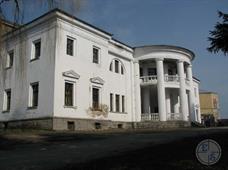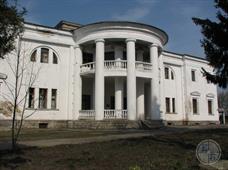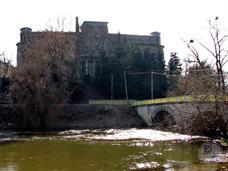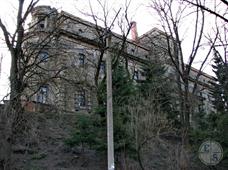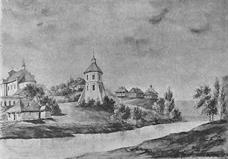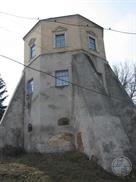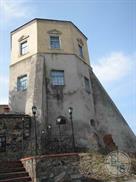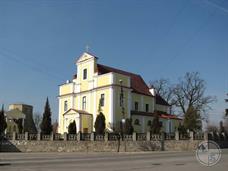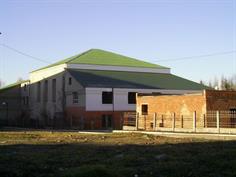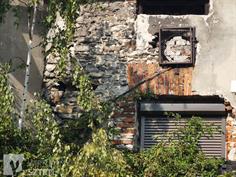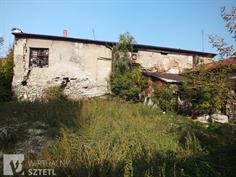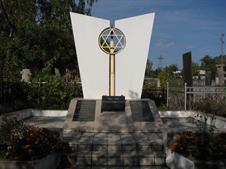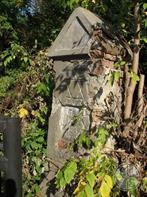Khmilnyk
Khmilnyk, 2012
The first town mentioned in chronicles v1363, thanks to the fact that close to a year before the Lithuanian Prince Algirdas gave a small pogrom Tatar horde.
With 1434 on 1793 Chmielnik was a member of the Commonwealth, except for short periods. In 1648-1667 the city was listed as a part of Ukrainian Cossack Hetman state; in 1659 it can be said, even I became the capital - here decided to place his residence Hetman Ivan Vygovskyy.
With 1672 on 1699 Chmielnik belonged to the Ottoman Empire. Turks strengthened the local castle, and in one of the towers arranged mosque, preserved to our days.
In 1793 Khmelnik joined the Podolsk province of the Russian Empire.
Since 1923, it is a regional center.
In 1934, a unique curative radon water was discovered in Chmielnik, which has no analogues in the world. Since then, the city set up a bunch of resorts, and it is declared a resort area.
With 1434 on 1793 Chmielnik was a member of the Commonwealth, except for short periods. In 1648-1667 the city was listed as a part of Ukrainian Cossack Hetman state; in 1659 it can be said, even I became the capital - here decided to place his residence Hetman Ivan Vygovskyy.
With 1672 on 1699 Chmielnik belonged to the Ottoman Empire. Turks strengthened the local castle, and in one of the towers arranged mosque, preserved to our days.
In 1793 Khmelnik joined the Podolsk province of the Russian Empire.
Since 1923, it is a regional center.
In 1934, a unique curative radon water was discovered in Chmielnik, which has no analogues in the world. Since then, the city set up a bunch of resorts, and it is declared a resort area.
In 1827, 5671 Jews lived in Chmielnik, representing 82% of the population. In 1869, at the
many cities in the Kingdom of Poland deprived of city rights. Khmelnik kept them together with
six other cities Kielce province. This has improved the economic situation
the city where they worked: agricultural machinery plant Elias Strauha, 6 tanneries
factories 4 cloth factory, perfume shop, a brewery and a massacre. AT
Chetvergova trading 9,000 people participated, and local fairs were among the
stopnitskom the largest in the district.
According to the census of 1921 in the city lived 5908 Jews, accounting for 77% of the population.
The biggest factories of the time in the city - a limestone mine Haim Frank
Abram and Jonas Shtrauherov, Elias Shlyama, gypsum factory Mechelen Kaufman, plant
carbonated water Mote Vesengartena plant fruit wines Icek Rise, creamery
Shlyamy Brickman, brewery Icek Demba, soap and candle factory Mote Pasternak. Small artisans engaged sapozhnichestvom, tailoring,
nodding production skornyazhnichestvom and joinery.
In 1920-1930 gg. He acted Jewish National Council, worked with school teaching Yiddish.
many cities in the Kingdom of Poland deprived of city rights. Khmelnik kept them together with
six other cities Kielce province. This has improved the economic situation
the city where they worked: agricultural machinery plant Elias Strauha, 6 tanneries
factories 4 cloth factory, perfume shop, a brewery and a massacre. AT
Chetvergova trading 9,000 people participated, and local fairs were among the
stopnitskom the largest in the district.
According to the census of 1921 in the city lived 5908 Jews, accounting for 77% of the population.
The biggest factories of the time in the city - a limestone mine Haim Frank
Abram and Jonas Shtrauherov, Elias Shlyama, gypsum factory Mechelen Kaufman, plant
carbonated water Mote Vesengartena plant fruit wines Icek Rise, creamery
Shlyamy Brickman, brewery Icek Demba, soap and candle factory Mote Pasternak. Small artisans engaged sapozhnichestvom, tailoring,
nodding production skornyazhnichestvom and joinery.
In 1920-1930 gg. He acted Jewish National Council, worked with school teaching Yiddish.
Before the Swedish invasion in the mid-17th century Chmielnik was a strong center of Arianism.
Thanks to the goodwill of owners of the city - Oleśnica and Goluchowski - here
regularly held synods. They also contributed to the settlement of the Jews, as
indicates the privilege of 1630 g, published Krzysztof Goluchowski,
allowing Jews to trade, to have vineyards and restaurants, to build houses and synagogues,
open schools.
In 1656 Hetman Stefan Czarnecki army killed in the town of about 100 Jews, and 2 years
later from Poland drove the Arians. The city lost a large part of the population. In 1787
Khmelnik numbered about 1,400 people, including 782 Jews.
After the partition of Poland Chmielnik III was in the borders of Austria, and from 1815 belonged to the Kingdom of Poland, who was within the Russian Empire. At the end of the XVIII century.
among the local Jews were Hasidim and settled in the city of one of the sons of the tzaddik
Elimelech of Lezajsk, Eliecer Vaysblyum Lipa, a disciple of Baal Shem Tov. In the first half of the XIX century. in the town were outnumbered fans Menachem Mendel Morgenstern of Kotzk.
Thanks to the goodwill of owners of the city - Oleśnica and Goluchowski - here
regularly held synods. They also contributed to the settlement of the Jews, as
indicates the privilege of 1630 g, published Krzysztof Goluchowski,
allowing Jews to trade, to have vineyards and restaurants, to build houses and synagogues,
open schools.
In 1656 Hetman Stefan Czarnecki army killed in the town of about 100 Jews, and 2 years
later from Poland drove the Arians. The city lost a large part of the population. In 1787
Khmelnik numbered about 1,400 people, including 782 Jews.
After the partition of Poland Chmielnik III was in the borders of Austria, and from 1815 belonged to the Kingdom of Poland, who was within the Russian Empire. At the end of the XVIII century.
among the local Jews were Hasidim and settled in the city of one of the sons of the tzaddik
Elimelech of Lezajsk, Eliecer Vaysblyum Lipa, a disciple of Baal Shem Tov. In the first half of the XIX century. in the town were outnumbered fans Menachem Mendel Morgenstern of Kotzk.
1939 census records 4793 Jews in Chmielnik, representing 64.8 percent of the total population. This number does not include Jews Ugrinovki, I sat next to Chmielnik, (now part of the city Chmielnik). The Jewish population in the county Khmelnik employs 810 people; most of them lived in Ugrinovke.
In 1939-41. We settled in Chmielnik Jewish refugees from Poland. In general, the Jewish population of Chmielnik and Ugrinovki was about 6,000 people to the summer of 1941.
In 1939-41. We settled in Chmielnik Jewish refugees from Poland. In general, the Jewish population of Chmielnik and Ugrinovki was about 6,000 people to the summer of 1941.
The German army occupied Khmelnik July 17, 1941. The vast majority of the Jews could not evacuate and remained under German occupation.
Massacres of Jews began shortly after the occupation began, and continued until 26 June 1943.
In autumn 1941 Chmielnik Jews were imprisoned in the ghetto, consisting of several streets in the old town and fenced with barbed wire. Many Jews were brought from other localities, including a large number of people from Ulanova.
Most mass murder took place on 9 and 16 January 1942, 5800 people were killed.
Abandoned in the ghetto Jews repressed during "experts", 16 people died in the end of 1943.
In 2012 in Chmielnik there is a small Jewish community.
Massacres of Jews began shortly after the occupation began, and continued until 26 June 1943.
In autumn 1941 Chmielnik Jews were imprisoned in the ghetto, consisting of several streets in the old town and fenced with barbed wire. Many Jews were brought from other localities, including a large number of people from Ulanova.
Most mass murder took place on 9 and 16 January 1942, 5800 people were killed.
Abandoned in the ghetto Jews repressed during "experts", 16 people died in the end of 1943.
In 2012 in Chmielnik there is a small Jewish community.
The building of the former synagogue is now owned by one of the resorts.
Photos sztetl.org.pl
Photos sztetl.org.pl
At the Jewish cemetery survived several old original Matseva. There is a mass grave of victims of the Shoah.
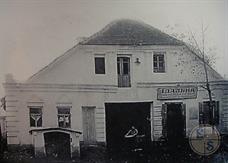 |
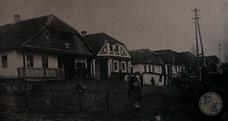 |
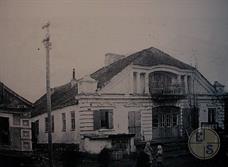 |
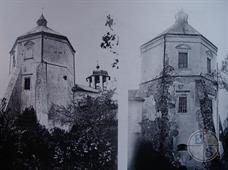 |
| The former hotel in 1930, made the dining room. Photo P.Zholtovskiy | Street of village, 1930 Photo P.Zholtovskiy | House in the center, 1930 Photo P.Zholtovskiy | Tower Castle, 1930 Photo P.Zholtovskiy |
Vinnitsa Region

My shtetl
My shtetl
Jewish towns of Ukraine
Jewish towns of Ukraine
